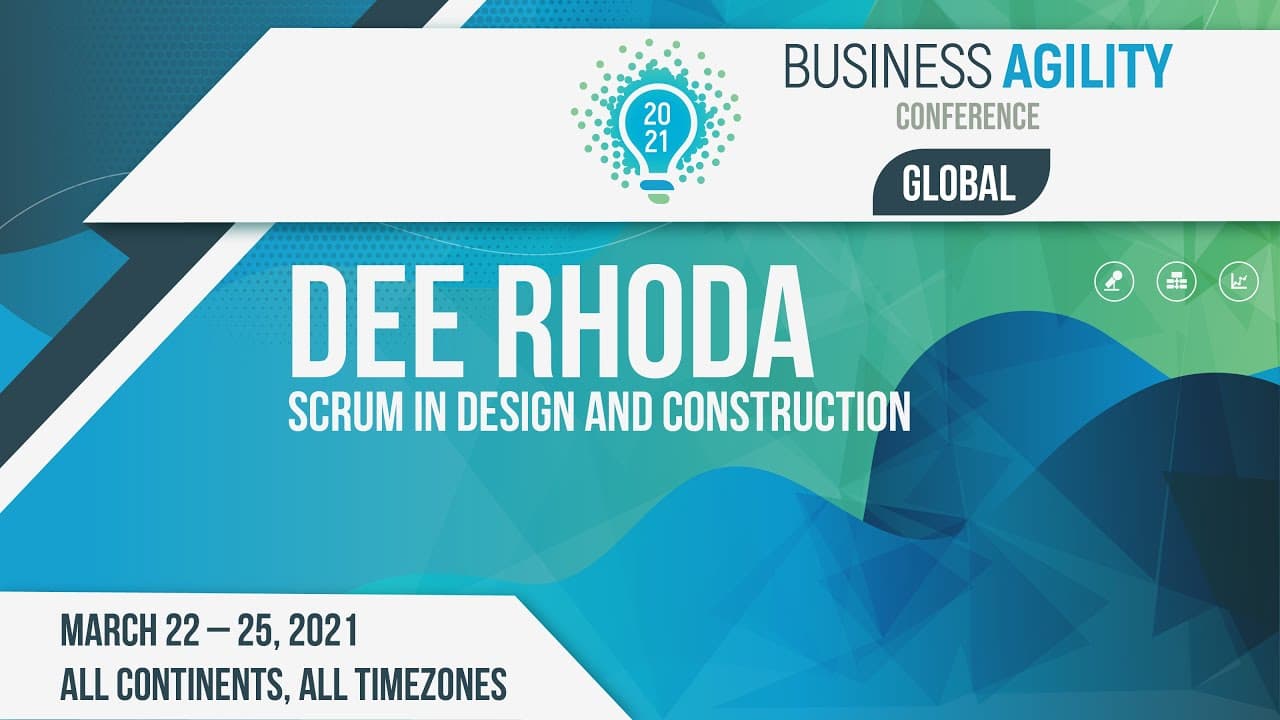Welcome, everybody, and thank you for inviting me to talk about why Lean just isn’t enough when it comes to design and construction. If you wouldn’t mind, please go into the chat and let me know how many of you have a background in design and construction. That would be helpful for me.
While you’re doing that, let me introduce myself. My name is Dean Rona, and I’m a principal consultant. My family owns a highway heavy construction company and a rebar coating company, so I’ve seen the industry up close. I tried to stay away from the family business as long as I could, but last year, I started working very closely in the design and construction industry with companies looking to change the way they work.
Scrum is Not Just for IT
That experience led me to a question we often ask: why is Scrum not just for IT? Scrum is a solution across multiple industries, and the design and construction industry can truly benefit from changing the way it approaches work.
For those of you in this industry, you know the traditional approach—design, bid, build—has been around forever. The industry has been slow to change, and I’ve witnessed firsthand the aversion to change. This is an industry steeped in tradition and hierarchy. Sound familiar? That’s true in almost any industry where we try to make changes—hierarchy, tradition, and aversion.
However, many other industries have already started to change how they work. Manufacturing, marketing, and human resources are embracing agility and an agile mindset. This provides a competitive advantage in any marketplace.
The Iron Triangle Approach Has Failed
The iron triangle approach has failed for many years in design and construction. We can no longer set ourselves up for failure. We need to stop gathering big, audacious requirements upfront and start creating incremental, iterative work packages that deliver true value.
The traditional approach does not work, and the industry is starting to reject it. Why wouldn’t they? Research shows that companies sticking to the traditional approach will continue to suffer from slow delivery times and budget creep. In fact, 58% of owners now say they will no longer work with companies using the traditional design-bid-build approach. It’s not working, and companies that want to stay competitive need to realize this and adapt.
Decision Latency and Scrum
The Standish Group has been researching why Scrum works, and the answer is decreasing the average time to make a decision—this is called decision latency. Their research, dating back to 2013, shows that poor decision latency—where decisions take more than five hours—does not support an effective process. However, when decisions are made within one hour or less, organizations are significantly more successful.
Scrum teams reduce decision latency by empowering cross-functional, self-managing, small, dedicated teams. The challenge to achieving this 42% increase in success with good decision latency is bureaucracy and hierarchy, which exist across all organizations. In design and construction, there are many sign-offs, inspections, and handoffs. Some are necessary, but many introduce excessive waiting, which is the biggest waste in the industry.
Moving from a Push System to a Pull System
We need an approach that allows for freedom where possible and standardization where necessary. Recently, we’ve started taking steps to effect this change. Design-build is becoming more popular, and we are beginning to see the value of moving away from a push system and toward a pull system in project management.
Just removing the steps in the bid process has increased delivery speed by 33.5%. However, we can do even better. Lean alone is not enough. By combining Lean principles with the Scrum framework, we bring collaboration, innovation, and ideation to life with a holistic approach to project management. This approach brings together designers, owners, construction professionals, and trade professionals to decrease risk, increase quality, and accelerate time to work in place.
Scrum in Action: A Case Study
In 2018, Scrum Inc. worked with an offshore oil refinery in Azerbaijan. We spun up 16 Scrum teams, and the results were striking:
- They saved $26 million in one year in logistics costs by optimizing vessel use.
- The Scrum teams identified opportunities to reduce capital expenditures by nearly $1 billion.
- The number of work order change requests executed behind schedule decreased by half.
Solving for Complexity and Complicated Processes
By combining Lean principles with Scrum, we address both the complicated and the complex aspects of construction projects. Construction projects are complicated—there are many moving parts that must fit together to drive a job to completion. We need to bring together equipment, materials, people, and trades to solve these complicated challenges, and Lean helps with that.
However, construction projects are also complex. We must be able to adapt and pivot in response to uncertainties such as price increases, supply or labor shortages, and, of course, unpredictable weather. Scrum amplifies Lean and takes it further.
Traditional Project Management Under-Delivers
The statistics prove it—traditional project management under-delivers. You will have access to these statistics in the slides we’ll be sharing with you after the presentation. I won’t go through them all, but we all know this: the traditional project management model isn’t working.
Leadership Must Lead the Change
The connection is clear—leadership needs to lead the change. Leadership must embrace agility, not just Lean, and focus on bringing all parties together. People and interactions must take priority over processes and tools. The Agile Manifesto provides that focus.
A group of us in the industry came together to see how Agile values translate to design and construction. The focus is familiar:
- We work across specialties and teams to deliver a common goal.
- We deliver design or work in place incrementally and gather feedback from stakeholders.
- We work with suppliers and owners to co-develop solutions.
- We acknowledge that plans will change and create flexible plans to address shifting environments.
People First
What I want to emphasize here is: people first. My passion is looking at the statistics and finding ways to make meaningful change.
The construction industry has the highest rate of suicide across all industries in the U.S. Suicide rates for veterans in the construction industry are 1.5 times greater than for non-veterans. Some key reasons for this include performance pressures, schedules, budgets, quality demands, and a culture steeped in a stoic, old-school, tough-guy mentality.
I present these statistics for awareness and in the hope that we can change this. The traditional approach to design and construction does not work. The industry is rejecting it. Leadership is beginning to embrace an Agile mindset, Lean principles, and Scrum.
My passion and my hope are that by changing the approach in this industry, we will not only improve outcomes—we will literally be changing and saving lives.
Thank you.



